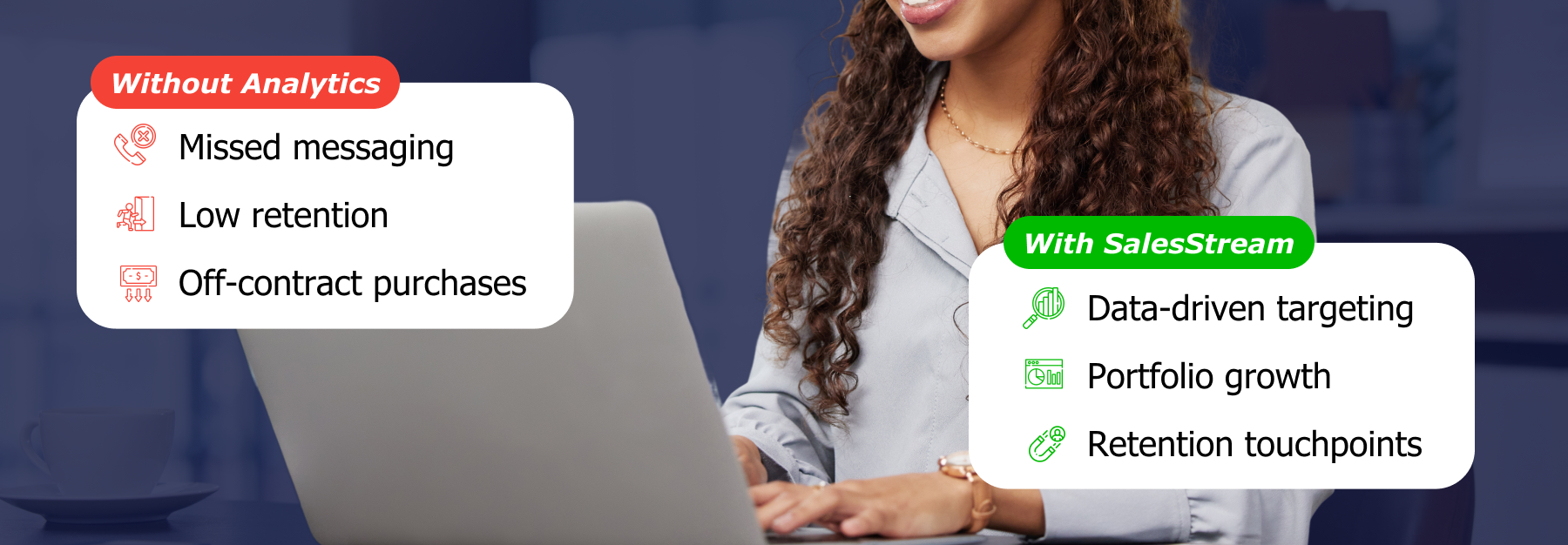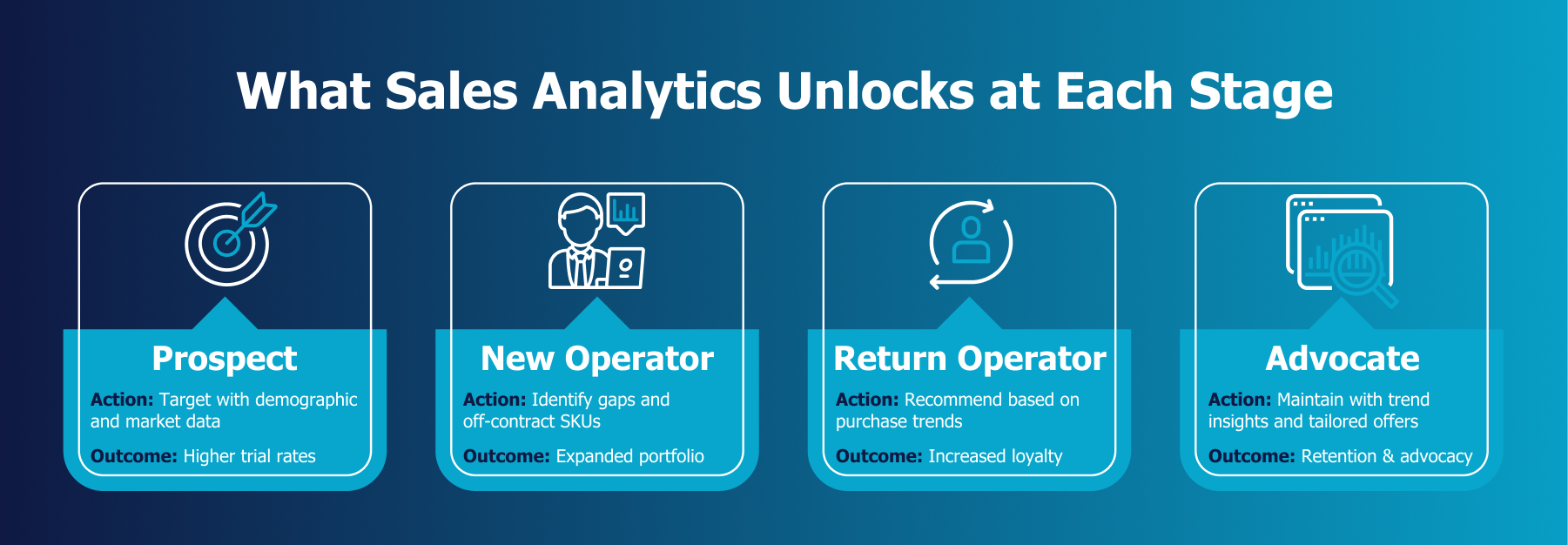Landing a new foodservice operator should be the beginning of a strong partnership—not just a quick win that disappears by quarter’s end. But in a world where attention is short and competition is fierce, that partnership needs more than just a handshake. It needs insights, timing, and a clear strategy for long-term engagement powered by manufacturing sales analytics.
Operators who stick around for the long haul don’t just reorder—they scale. In fact, loyal operators purchase 9x more cases on average than new ones. Yet despite this, manufacturers still lose 70% of their new operator accounts every year. That’s more than a retention problem—it’s a manufacturing sales analytics problem.
Because if you can’t see how your foodservice operators are buying, you can’t stop them from slipping away.

The Problem: Flying Blind in the Foodservice Sales Cycle
Without timely, strategic data, manufacturers are left to guess what foodservice operators need, when they need it, and how to keep them engaged. This disconnect shows up across the entire customer journey—and it’s exactly where manufacturing sales analytics can make a measurable impact.
- Prospects aren’t being targeted with relevant messaging.
- New operators aren’t nurtured with the right products or support.
- Return customers aren’t introduced to complementary SKUs.
- Advocates aren’t being rewarded or retained through trend-aligned offerings.
Each stage requires a different approach, and that approach should be backed by actionable insights from manufacturing sales analytics. Without it, manufacturers risk applying the wrong message to the wrong customer at the wrong time—and losing them entirely.
The Solution: Using Manufacturing Sales Analytics to Guide the Sales Cycle
To reduce churn and maximize revenue growth, sales and marketing teams need visibility into how operators move through the buying journey. With the right data, you can meet each foodservice operator where they are and move them forward with precision, not guesswork. Here’s how manufacturing sales analytics makes all the difference:
1. Prospect Stage: Drive Product Trial
This is where brand awareness and first impressions matter. By using demographic data, market insights, and product availability trends, you can identify which operators are most likely to benefit from your offering. Instead of casting a wide net, sales analytics enable precise targeting—reaching the right customers, in the right segment, with messaging that resonates. Smart segmentation leads to higher trial rates and stronger initial engagement.
2. New Operator Stage: Grow the Portfolio
Once a prospect becomes a customer, the opportunity shifts to expansion. Manufacturing sales analytics provide real-time visibility into what they’re ordering—and what they aren’t—can reveal gaps in the portfolio. Are they buying off-contract? Are they splitting volume across vendors? Strategic insights here help you introduce the right SKUs at the right time and build a broader purchasing relationship that cements your brand’s value.
3. Return Operator Stage: Increase Stickiness
At this stage, you’re not just selling products—you’re strengthening loyalty. Digging into purchase trends using sales analytics helps identify adjacent categories where your brand can add value. You can also adjust your approach based on seasonality, emerging preferences, or operator growth. Data empowers you to evolve alongside your foodservice operators and remain their preferred partner.
4. Advocate Stage: Maintain and Engage
Foodservice operators who have been buying for years are your brand champions. Keep them engaged with manufacturing sales analytics that highlight performance trends, suggest new offerings, and pinpoint opportunities to optimize their purchasing.

Why It Matters: Retention Drives Revenue
Long-term customers are your biggest growth lever—and your best advocates. But staying top of mind requires effort. Manufacturing sales analytics can surface shifts in volume, highlight emerging needs, and provide insights that help you offer tailored recommendations. With the right touchpoints and insights, you turn a loyal customer into a brand champion who refers, expands, and advocates.
It costs far more to acquire a new foodservice operator than to keep an existing one. Yet, without visibility into operator behavior, even the best-intentioned sales teams struggle to stay proactive. The result? Missed upsell opportunities, unnoticed churn, and untapped lifetime value.
When you have sales analytics guiding your outreach and strategy, retention stops being a guessing game and starts becoming a growth engine.
How ArrowStream Can Help
You know your category—but do you know what your customers are actually buying?
SalesStream gives manufacturers the visibility to protect revenue, uncover new opportunities, and grow smarter. With real-time operator and distributor data across all industries, you can:
- Prioritize high-intent accounts and reduce churn
- Uncover hidden volume loss and competitor leakage
- Target the right prospects with data-driven outreach
- Grow existing accounts with performance and category insights
- Align sales and marketing around real customer demand
Click here to learn more about SalesStream for Manufacturers or fill out the form below to get in touch with our team and explore how ArrowStream can support your growth.
